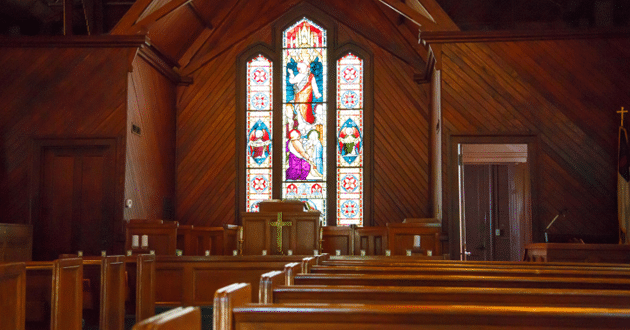WHEATON, Ill. — Attracting and keeping people considered unchurched is rated as the top predictor of growth through new professions of faith at small churches, according to a new study encompassing 12 Christian denominations.
“These churches are places of invitation, welcome and involvement for the unchurched,” the study’s authors said. “So, the unchurched stick around in greater numbers. And they come to Christ and get committed to the church in greater numbers.”
The Billy Graham Center of Wheaton College in Wheaton, Ill., conducted the newly released study in partnership with and the Caskey Center for Church Excellence of New Orleans Baptist Theological Seminary. The telephone survey of 1,500 pastors and church leaders found and ranked 29 predictors of growth through Christian conversion at churches of 250 members or less. Study authors released the top 10 growth predictors June 26.
Second to attracting and keeping the unchurched, small churches that grow by Christian conversions tend to offer classes for new attendees, the study found. Such classes help even when they are not evangelistic.
Thirdly, small churches that grow through new baptisms are led by pastors who routinely undergo personal evangelism training.
“If the pastor is a learner and stays inspired and growing in the area of evangelism,” study authors said, “that pastor’s church will reach more people who commit to Christ and who stick.”
In the Wheaton study, the other top growth predictors among small churches are:
• The pastor more frequently “pops the question,” asking people to commit after he shares the Gospel.
• The church spends a higher percentage of its budget on evangelism and missions.
• Church members often tell the pastor that they themselves are sharing the Gospel with others, rather than relying on the pastor to carry the load alone. “The church does not need superstar pastors who share their faith while everybody in the church cheers them on from the sidelines,” study authors said.
• Unchurched visitors often communicate favorable feedback to pastors after weekly worship services.
• The church shares the Gospel outside its walls and conducts community service.
• Churches that grow through conversions concurrently tend to draw members from other congregations. “In other words,” study authors wrote, “transfer and conversion growth tend to go together for small churches.”
• Cited as the 10th most predictive factor of growth through new conversions, according to the study, “the pastor more frequently blocks out time in the calendar for the purpose of sharing the Gospel with non-Christians. If the pastor is to lead evangelism in the church, the pastor must first personally live out the evangelism call.”
Smaller churches in the survey, those with 150 or fewer members, tended to grow more easily than the larger small churches in the survey, the study found. Additionally, predominantly Hispanic and Native American churches tended to fare better in growth.
The churches responding to the survey are members of the Assemblies of God, the Associate Reformed Presbyterian Church, the Church of the Nazarene, the Southern Baptists, the Conservative Congregational Christian Conference, Converge Worldwide, the Evangelical Covenant Church, the Evangelical Free Church in America, The Foursquare Church, the Missionary Church, Vineyard US and The Wesleyan Church.
Study authors are Caskey Center director Mark Tolbert; Ed Stetzer, executive director of Wheaton’s Billy Graham Center for Evangelism and former LifeWay Research executive director; and Rick Richardson, director of the Wheaton’s M.A. in Evangelism and Leadership. The study will be ongoing through follow-up interviews with pastors, according to the report.

